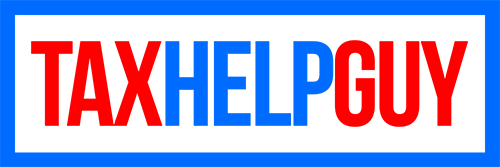If you owe back taxes in Victorville, Apple Valley, Hesperia, or anywhere in the High Desert, you have several options for resolving your tax debt. Understanding the differences between paying in full, Currently Not Collectible (CNC) status, and installment agreements can help you choose the best strategy for your situation and save thousands of dollars.
💼 Need Help Choosing a Payment Plan?
Choosing the right payment strategy requires understanding your financial situation and IRS requirements. Our tax professionals in Apple Valley and Victorville can help you evaluate your options and negotiate the best payment plan. Request a free consultation today!
Free Consultation RequestThree Main Payment Options
When you owe back taxes, you typically have three main options:
- Pay in Full: Pay the entire amount owed immediately
- Currently Not Collectible (CNC): Temporarily suspend collection due to financial hardship
- Installment Agreement: Make monthly payments over time
Option 1: Pay in Full
Paying your tax debt in full is the simplest option, but it's not always possible for High Desert taxpayers.
Advantages
- Stops all collection actions immediately
- Stops penalties and interest from accruing
- Resolves your tax debt completely
- No ongoing monthly payments
- Improves your credit and financial standing
Disadvantages
- Requires having the full amount available
- May deplete savings or emergency funds
- May require selling assets
- May require borrowing money
When to Choose Pay in Full
- You have the funds available without hardship
- The amount is relatively small
- You want to resolve it quickly
- You can pay without affecting essential expenses
Option 2: Currently Not Collectible (CNC) Status
Currently Not Collectible status temporarily suspends IRS collection activities when you can't afford to pay.
What is CNC Status?
CNC status tells the IRS that you can't afford to pay your tax debt right now. The IRS will:
- Stop collection actions (levies, garnishments)
- Stop sending collection notices
- Allow you time to improve your financial situation
- Review your status annually
Advantages
- Stops collection actions immediately
- Gives you time to improve your finances
- No monthly payments required
- Can be renewed if still in hardship
Disadvantages
- Penalties and interest continue to accrue
- Tax debt doesn't go away
- Must reapply annually
- IRS may file a tax lien
- Must show financial hardship
Qualification Requirements
To qualify for CNC status, you must show:
- Your necessary living expenses exceed your income
- You can't afford to make any payments
- You don't have assets that can be sold
- You're experiencing genuine financial hardship
💡 High Desert CNC Considerations
If you're in Victorville, Apple Valley, or Hesperia and experiencing financial hardship, CNC status can provide relief. However, you must provide detailed financial information to the IRS. Our tax professionals can help you prepare a compelling CNC request that demonstrates your hardship.
Option 3: Installment Agreement
An installment agreement allows you to pay your tax debt in monthly payments over time.
Types of Installment Agreements
1. Guaranteed Installment Agreement
- Available if you owe $10,000 or less
- Can pay in full within 3 years
- IRS must accept if you meet requirements
- No financial statement required
2. Streamlined Installment Agreement
- Available if you owe $50,000 or less
- Can pay in full within 6 years (72 months)
- No financial statement required
- Can set up online or by phone
3. Partial Payment Installment Agreement (PPIA)
- Pay less than full amount over time
- Requires detailed financial statement
- IRS reviews every 2 years
- May require asset liquidation
4. Non-Streamlined Installment Agreement
- For debts over $50,000
- Requires financial statement (Form 433-F)
- IRS determines payment amount
- May require asset information
Advantages
- Makes payments manageable
- Stops collection actions
- Allows you to keep assets
- Can be set up quickly (for streamlined)
- Flexible payment terms
Disadvantages
- Penalties and interest continue to accrue
- Must make payments on time
- Default can restart collection
- May require financial disclosure
- Setup fees may apply
Comparison Table
| Feature | Pay in Full | CNC Status | Installment Agreement |
|---|---|---|---|
| Stops Collection | Yes, immediately | Yes, temporarily | Yes, while in good standing |
| Stops Penalties/Interest | Yes | No | No |
| Monthly Payments | None | None | Required |
| Financial Disclosure | Not required | Required | Depends on type |
| Duration | Immediate | Annual review | Until paid in full |
| Best For | Those who can afford it | Those in financial hardship | Those who can make payments |
How to Choose the Right Option
Step 1: Assess Your Financial Situation
- Calculate your monthly income
- List your necessary expenses
- Determine how much you can pay
- Evaluate your assets
Step 2: Consider Your Goals
- Do you want to resolve it quickly?
- Can you afford monthly payments?
- Are you in financial hardship?
- Do you have assets to protect?
Step 3: Understand the Costs
- Pay in Full: Stops all costs immediately
- CNC: Costs continue to accrue
- Installment: Costs continue, but manageable
Real-World Examples for High Desert Taxpayers
Example 1: Can Pay in Full
Situation: You owe $5,000 and have $8,000 in savings
- Option: Pay in Full
- Result: Debt resolved, $3,000 remaining in savings
- Cost: $5,000 (no additional penalties/interest)
Example 2: Financial Hardship
Situation: You owe $15,000, but expenses exceed income
- Option: Currently Not Collectible
- Result: Collection stopped, time to improve finances
- Cost: Penalties/interest continue, but no payments
Example 3: Can Make Payments
Situation: You owe $12,000 and can pay $200/month
- Option: Streamlined Installment Agreement
- Result: $200/month for 60 months
- Cost: $12,000 plus penalties/interest
Common Mistakes to Avoid
- Choosing the wrong option: Not evaluating all options
- Defaulting on payments: Can restart collection
- Not providing accurate information: Can lead to rejection
- Ignoring the debt: Makes situation worse
- Not seeking professional help: Missing opportunities
When to Seek Professional Help
Consider professional help if:
- You owe more than $10,000
- You're unsure which option is best
- You need to negotiate payment terms
- The IRS has already taken collection action
- You need help preparing financial statements
💡 Professional Negotiation Advantage
Tax professionals in Apple Valley and Victorville can often negotiate better payment terms than you can on your own. We understand IRS requirements and can present your case in the most favorable light, potentially saving you money and getting you better terms.
Local Resources for High Desert Taxpayers
- San Bernardino IRS Office: 290 North D Street, San Bernardino, CA 92401
- IRS Phone: 1-800-829-1040
- Online Payment Agreement: IRS.gov/paymentplan
- Local Tax Professionals: Available in Apple Valley, Victorville, and Hesperia
📞 Get Help Choosing Your Payment Plan
Choosing the right payment strategy for your tax debt in Victorville, Apple Valley, Hesperia, or anywhere in the High Desert requires careful evaluation. Our tax professionals can help you understand your options and negotiate the best terms. Call us today or request a free consultation!
Call (760) 249-7680Conclusion
Understanding the differences between paying in full, Currently Not Collectible status, and installment agreements is crucial for High Desert taxpayers in Victorville, Apple Valley, and Hesperia. Each option has advantages and disadvantages, and the best choice depends on your financial situation, goals, and ability to pay.
If you need help evaluating your options or negotiating with the IRS, our tax professionals in Apple Valley and Victorville are here to help. We can assess your situation, explain your options, and work with the IRS to get you the best possible payment arrangement.

